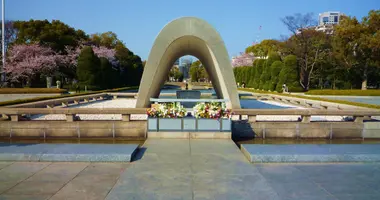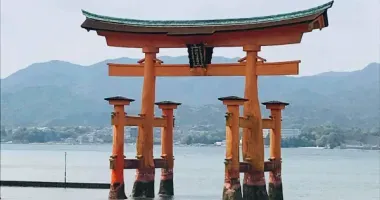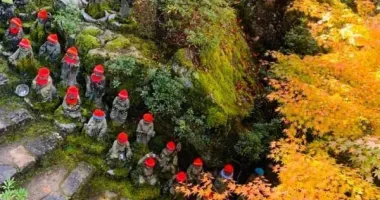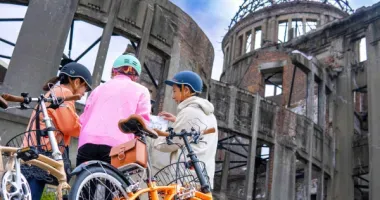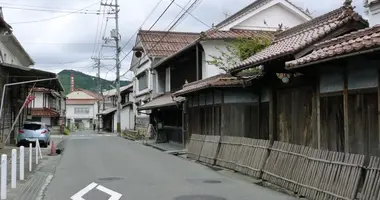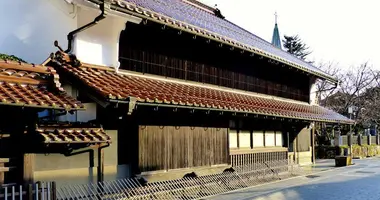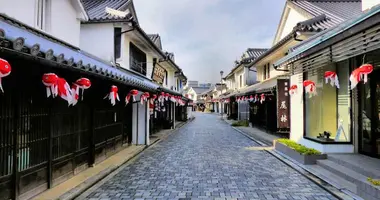Aiba Waterway
Aiba Waterway: the Aiba Waterway in Hagi, Yamaguchi Prefecture is an historic canal that flows into a number of Edo Era houses.
Aiba Waterway 藍場川
The castle town of Hagi in Yamaguchi Prefecture was constructed on the delta of the Abu River. In the south of the town, a little east of Hagi Station, right where the river initially forks is a quiet area known as the Aiba Waterway. The Aiba Waterway a little off the main tourist areas of the town, but is well worth a visit.
History of the Aiba Waterway
A quiet narrow, lane follows the carp-filled waterway and a couple of the traditional buildings are open to the public. The area was prone to flooding during times of heavy rainfall and so the stream was canalized in 1717 to help control the flooding and for use in irrigating fields.
In 1744 it was deepened and widened and small boats were used to carry goods, but the most interesting use of the waterway was in what is known as hatoba, whereby the water was brought into the houses and used in the kitchens and bathrooms.
 View of the Aiba Waterway in Hagi, Yamaguchi Prefecture
View of the Aiba Waterway in Hagi, Yamaguchi Prefecture The Aiba Waterway in Hagi flows directly into family kitchens
The Aiba Waterway in Hagi flows directly into family kitchens
Yukawa Residence
The Yukawa Residence is entered over a huge slab of stone serving as a bridge across the canal. The Yukawa family were low-ranking samurai, but their house is much larger and grander than usual for a family of their rank, probably due to their position as "keepers" of the canal.
The large tatami rooms contain artworks and various implements, but more interesting is the bathroom and kitchen. In the kitchen, stone steps lead down to the water's edge and the opening is covered by a canopy.
Here the family drew water for the cooking and cleaning and also used a small waterwheel to power a mortar and pestle. Many of the houses along the waterway still have these hatoba. There is a nice garden with a teahouse and a small pond fed by the stream that runs through the garden. The water comes from and returns to the Aiba.
 Tatami rooms at the Yukawa Residence in Hagi, Yamaguchi
Tatami rooms at the Yukawa Residence in Hagi, Yamaguchi Aiba Waterway and garden in Hagi, Yamaguchi
Aiba Waterway and garden in Hagi, Yamaguchi
Taro Katsura Residence
Accesible from the garden is a much smaller samurai residence, the childhood home of Taro Katsura, the longest-serving Japanese Prime Minister ever. His family moved here when he was three years old. As a youth he joined the anti-Tokugawa movement and fought in the Boshin War which resulted in the Meiji Restoration.
Sent to Germany to study military science he was the military attache at the Japanese Embassy there before fighting in the Sino-Japanese War of 1894-95 as a Major General. After the war he became a Viscount and served as Governor General of Taiwan. From 1898 to 1901 he was Minster of War and then became Prime Minister three times, from 1901 to 1906, 1908 to 1911, and for a few months from 1912-1913, serving almost 12 years in total.
There is are usually volunteer guides at both houses that often speak English.
Yukawa Residence
Open 9 am-5 pm
Admission: 100 yen
Katsura Residence
Open 9 am-5 pm
Admission: 100 yen
There is one other point of interest in the area, if you follow the waterway north from the two open houses you will find a small temple, Zenpuku-ji, and in the grounds you can find a stone lantern base with a carving of Kannon designed by Furuta Oribe, a Tea Master from the early Edo period. This was used by kakure kirishitan, the "Hidden Christians." With the lantern on top it formed a cross and the Buddhist figure of Kannon was a substitute for the Christian Virgin Mary.
 Katsura Residence in Hagi, Yamaguchi Prefecture
Katsura Residence in Hagi, Yamaguchi Prefecture
Aiba Waterway Access
The Aiba Waterway is south of Hagi's main attractions and north of Hagi Station across the Abu River.
 Zenpuku-ji Temple stone lantern in Hagi, Yamaguchi
Zenpuku-ji Temple stone lantern in Hagi, Yamaguchi
Text & images by Jake Davies

